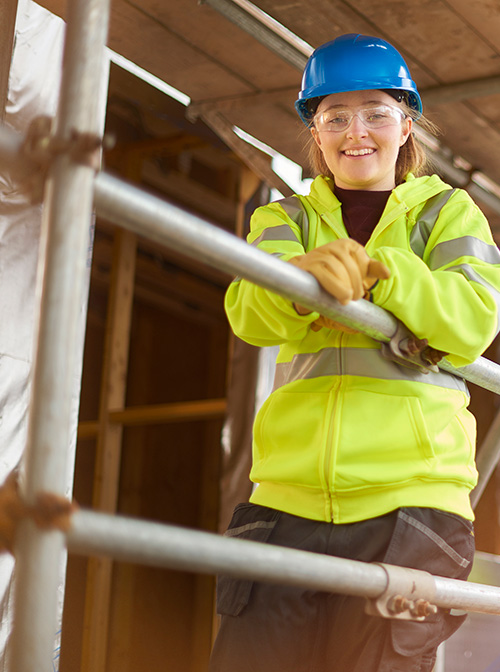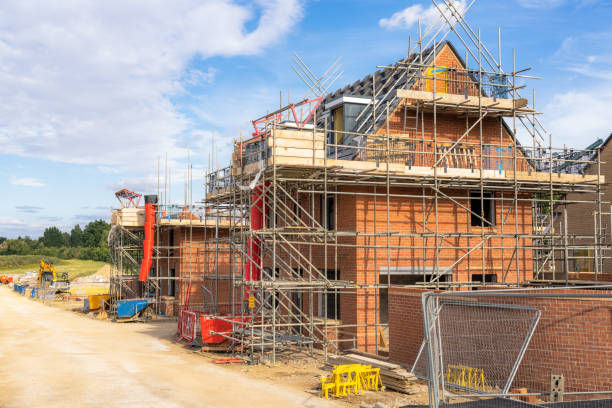Do You Really Need Scaffolding? Here’s When (and When Not) To Use It
When it comes to construction, renovation, or maintenance work on buildings, one of the most common questions people ask is, “Do I really need scaffolding?” The answer largely depends on the type of work you’re doing, the location of the building, and safety regulations in the UK.
At Edan Scaffolding, we’ve worked with countless projects across Birmingham and the UK, helping homeowners, businesses, and contractors choose the right scaffolding solutions. In this guide, we’ll help you understand when scaffolding is necessary, when it isn’t, and why making the right choice is essential for safety and efficiency.
What is Scaffolding?
Scaffolding is a temporary structure used to support workers, tools, and materials during construction, maintenance, or repair work. It provides a safe and stable platform at heights that ladders simply cannot.
When You Definitely Need Scaffolding
There are many situations where scaffolding is not just recommended—it’s essential. Let’s explore these:
Working at Height
If your project involves working at heights beyond what a stable ladder can safely support, scaffolding is required. In the UK, working at height regulations (Work at Height Regulations 2005) mandate that safe access is provided when working off the ground.
For example:
• Roof repairs
• Chimney work
• Gutter replacement on multi-storey buildings
Long-Duration Projects
If the job is expected to take more than a few hours or involves multiple workers simultaneously, scaffolding offers more space and security than ladders or temporary platforms.

Handling Heavy Materials
Scaffolding is necessary if you’re working with heavy tools or building materials that need to be carried or stored at height. Ladders don’t offer the load capacity or working area required for such jobs.
Compliance with Health & Safety Laws
If you’re hiring professional contractors, they’ll often insist on scaffolding to comply with UK health and safety regulations. Using scaffolding helps prevent falls—the leading cause of injuries on UK construction sites.
Complex Building Shapes
For buildings with unusual designs, curves, or overhangs, scaffolding provides access to otherwise unreachable sections, making the work much safer and more efficient.
Ensuring Worker Safety
Even if the job seems manageable with a ladder, scaffolding is the safer choice for:
• Multi-storey properties
• Large-scale renovations
• Fragile roofs where weight distribution matters

When You May Not Need Scaffolding
There are many situations where scaffolding is not just recommended—it’s essential. Let’s explore these:
Minor, Low-Level Repairs
For quick repairs on ground-level windows, garden walls, or small exterior decorations, a sturdy ladder may be sufficient.
Interior Work
For indoor projects like painting, ceiling work, or lighting installation where heights are minimal, ladders, or indoor scaffold towers (also called access towers) may be more practical.
Single-Worker, Short Jobs
If the task involves minimal height, can be done quickly, and only requires one person, scaffolding might be unnecessary.
However, never compromise safety for convenience. If in doubt, it’s always wise to consult professionals like Edan Scaffolding for advice tailored to your project.
Why Scaffolding is Often the Better Choice
Even when scaffolding might not be strictly required, it’s often the better and safer choice for several reasons:
Stability and Safety
Properly installed scaffolding reduces the risk of falls, slips, and dropped tools.
Efficiency
Working on scaffolding speeds up the process by providing a stable, wide workspace for tools and materials.
Accessibility
With scaffolding, awkward angles and hard-to-reach places become far easier to work on safely.
Choosing the Right Scaffolding in Birmingham and the UK
The type of scaffolding you need depends on the job, building, and location. Common types include:
1. Supported scaffolds for exterior building work
2. Mobile scaffold towers for smaller, flexible interior projects
3. Suspended scaffolds for high-rise cleaning or repairs

If you’re unsure what’s right for your property, Edan Scaffolding provides expert advice, installation, and dismantling across Birmingham and surrounding areas.
Do You Need Permission for Scaffolding?
In the UK, if scaffolding is erected on a public pavement or road, you’ll need permission from the local council. However, if scaffolding is entirely within your property’s boundaries, permission isn’t usually required. We always help guide our customers through this process.

How to Get Started with Scaffolding
The type of scaffolding you need depends on the job, building, and location. Common types include:
1. Assess your project: Think about the type of work, height, duration, and materials.
2. Contact experts: Speak to professionals like Edan Scaffolding for a site assessment and expert recommendation.
3. Arrange for installation: Let the professionals install and dismantle the scaffolding to ensure full compliance with safety regulations.
4. Work safely and efficiently: With scaffolding in place, you can complete your project faster and with less risk.
Final Thoughts
When it comes to construction or renovation projects, the decision to use scaffolding can often mean the difference between a smooth, safe job or a risky, inefficient one. While it’s not required for every single task, in most cases involving exterior, elevated, or heavy-duty work, scaffolding is the right call.
At Edan Scaffolding, we provide tailored scaffolding services throughout Birmingham and across the UK, ensuring your project meets safety standards while being as efficient as possible.
FAQs About Scaffolding
It depends on the height of your house. For single-storey homes, a ladder may suffice, but for two-storey homes or above, scaffolding is safer and more practical.
Yes, especially for large or high roof repairs, scaffolding provides better access and safety.
For typical home projects, setting up scaffolding generally takes anywhere from a couple of hours to a full day, depending on how complex the setup is.
It’s not recommended unless you are qualified. Professional installation ensures stability and compliance with safety regulations.
If the scaffolding stays completely within the boundaries of your property, you normally won’t need any permission. However, if it extends onto pavements or roads, you’ll need to get approval from your local council first.
Yes, when properly erected and inspected regularly. However, work should be paused in extreme weather conditions like storms or high winds.
Professional scaffolding companies have liability insurance, and they comply with safety regulations to reduce risks significantly.
Yes, smaller mobile scaffold towers are ideal for indoor work like ceiling repairs or decorating.
It depends on the type of scaffolding used. Always consult professionals to ensure your scaffolding is appropriate for the weight of materials involved.
It’s best to arrange scaffolding as soon as you know your project dates, especially during busy periods like spring and summer.
